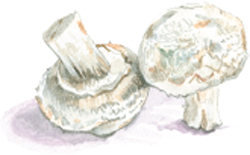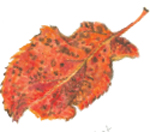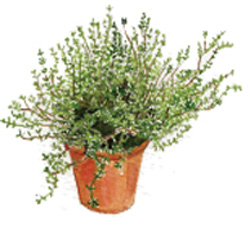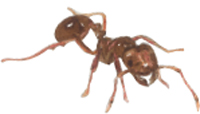

From outdoors to indoors
There are seeds that can be sown outdoors now, but as outdoors is no longer tempting – at least for doing slow things like seed sowing – now is the time to do indoor gardening. Before going indoors, there is still some outdoor work to be completed (see page 128). Snap up every sunny opportunity; the sunlight will be golden but lined with ice.
Growing mushrooms
I used to do this quite successfully in the sitting room. This doesn’t mean that carpets and rugs were sprouting champignons and fairy rings: the mushrooms were contained in a plastic bucket.
These buckets have now been replaced by polystyrene boxes measuring about 10 x 13 x 6in (25 x 33 x 15cm). There are two (maybe more) types of champignons that can be grown indoors: organic and inorganic. They can be bought or ordered from some (not all) nurseries and garden centres.
Mushroom
The Oxford English Dictionary definition: ‘Originally: a fleshy fungal fruiting body consisting of a stalk and a dome-shaped cap lined underneath with gills; the macroscopic fruiting body of a fungus, esp. a basidiomycete. Later also: any fungus, esp. an agaric or other basidiomycete. In popular use mushroom has often been reserved for edible species, toadstool being applied to inedible or poisonous ones … The mushroom is proverbial for its rapid growth.’
When growing mushrooms you enter a quite different world from that of plants. Plants belong to the plant kingdom. Animals are members of the animal kingdom. Mushrooms and toadstools have their own separate kingdom, the fungus kingdom. The words describing fungi are also different: there are universal veils, vulva, spores, fruiting bodies, fairy rings, mycelium, gills, partial veils, hyphae and many more.
Fungi differ from plants in many ways. They don’t have flowers, proper roots or leaves, or anything green about them (i.e. no chlorophyll). They don’t have seeds; instead they fruit by scattering their spores. Moulds that grow on damp walls, yeast for baking and brewing, and rusts that attack trees and crops are also fungi. Potato blight – one of the culprits in Ireland’s 1840s famine – is also a fungus, as is dry rot. Penicillium, the first antibiotic, grows on bread and overripe fruit. The mushroom (what we eat) is only a small visible part of the whole fungus. It is the fruiting body, the reproductive part. Most of the fungus, the mycelium, is hidden beneath the ground in a Hades-like world, from which it absorbs nourishment from dead or living organic matter.
‘Beware of musherons … and al other thinges, whiche wyll sone putrifie.’
Sir Thomas Elyot (c.1490–1546), The Castel of Helth
Mushrooms are strange (one is almost tempted to say creatures), seeming to have one foot (or rather mycelium) in the animal kingdom. They appear without warning, silent and cool. Plants don’t emerge with a great clatter and bang, but there is always a hint of their arrival: the upheaval on the earth’s surface, the sprouting of green tips, the squeaking of hyacinth leaves unwrapping.
The polystyrene box will usually contain two bags. Inside one will be spawned compost and in the other ‘casing’, which is a peat (in the case of the inorganic mushrooms) and chalk mixture. All that needs to be done is to cover the spawned compost (which resembles giant, damp All-Bran) with the casing. Follow the somewhat idiosyncratically translated instructions (in the case of the organic mushrooms).
Unfortunately, the organic mushrooms are slightly more difficult to grow than the inorganic, being fussy about the different temperatures in which they need to flourish. A thermometer will be needed. I have several, causing my flat to resemble a cottage hospital: in fact there is one thermometer, and sometimes two, per room – the second to keep an eye on the first.
(Apart from George Bernard Shaw’s Hertfordshire house, I know of no other house that contains so many thermometers and barometers. If I knew why Shaw was so interested in the rise and fall of mercury, I might know why I am. Mercury is a magical substance and a broken thermometer is something to look forward to. When the vertical liquid silver, held captive in the thin glass tube, is released, it turns into untouchable, uncatchable, star-coloured globules, infinitely more tempting to taste and feel on the tongue than silver cake decoration balls. But it is lethal.)
The organic mushrooms like to begin the first five to eight days of their life at a temperature of 68–77°F (20–25°C), conveniently the temperature inside the airing cupboard. Then for one day they prefer a temperature of about 59°F (15°C). After this they need to spend the rest of their indoor life, which may be a month or six weeks, at a more temperate 59–64°F (15–18°C). Cohabiting with organic mushrooms can be just as tricky as setting up house with the seedling propagator. If you are too hot or too cold, never mind, just turn on a fan or drink lemon with honey – the seedlings and mushrooms come first or they will die. You, probably, won’t.
Autumn and early winter are a good time to grow mushrooms. This is when they grow naturally outdoors.
‘For wine we left our heath, and yellow brooms, And cold mushrooms.’
John Keats (1795–1821), Endymion
When the mushroom container has been prepared, you might well wonder what is going on inside this apparently unpromising-looking polystyrene box, normally filled with objects such as radios and video recorders, but now filled with compost and spores. Apart from the faint woody smell, there is no suggestion of what is taking place. Beneath the soil or peat mixture, white-ish cobweb-like threads will begin to radiate out from the invisible spores, creating a constellation. These, the mycelia, are the equivalent of roots. Mycelia may be finer than hair or (in some species) as thick as bootlaces. When underground, they can stretch for many yards – some say miles. The mushrooms eventually die, but the mycelium continues to live. When two threads from two different spores meet, a swelling begins and a mushroom starts to grow.
Before this can happen, two to three weeks must pass; the compost should be kept moist, but not wet. Test it by squeezing a pinch between finger and thumb; if no water appears, water it. Keep the box away from direct sunlight. There is not a lot to be done in the way of mushroom caretaking: just waiting, watering and watching.
In the meantime smell the compost. It has a woodland odour – something never encountered indoors – and is springy and damp. It makes an even more tempting cats’ litter than the seed-compost trays.
Work to be done now

Apart from the worms’ monthly treat of ground eggshells, an additional bonus can be a thick slice of bread. Dampen it, place in the wormery and wait. After a few days the bread will be growing furry fungi: penicillium. Lift the slice gently; beneath it will be snuggled a little group of worms, using the bread as an edible air-raid shelter.
Leaves need to be removed – especially from the pond. Some gardeners are perpetually sweeping leaves during autumn and winter. Why not wait until the last leaf has fallen and then sweep? As I don’t like putting leaves in the rubbish bin to be thrown away, and don’t have enough leaves or space to have a leaf-composting bin, I collect them and then soak them in a bucket of water to soften them, before adding to the compost. This may or may not make it easier for the compost to digest them. Time will tell. But at least the softened leaves vary the compost’s diet and texture. The soaking water is used as a cold leaf consommé for the plants.
This is garlic-planting month. If you are going to France, buy some garlic: the robust, ruddy Gallic garlic is preferable to the anaemic-looking, neat specimens found in supermarkets. Divide the head into cloves and plant about 6in (15cm) apart, or singly, in not-too-shallow pots – about 8in (20cm) deep at least. Some gardeners place the cloves on top of the soil, just pressing the root end in; others push them into the soil with just the tips showing.
Sometimes it is possible to buy the bantam-egg-sized single-clove Chinese garlic. Try planting this, too. It can’t wait to start producing roots.
If you have sown autumn/winter salads, such as lamb’s lettuce and winter purslane, they will need protecting by loosely covering with a layer of fleece (available from garden centres). This is a soft, lightweight bridal-veil material bought in rolls. It is made of polypropylene and protects against frost, insects and birds, although light, air and water can penetrate it.

Sowing ‘sensitive plant’ seeds
Germinating and growing sensitive plant (Mimosa pudica) seeds is supposed to be difficult; even the instructions on the packet say so. Growing radishes is supposed to be easy; they are the first seeds given to children to sow. I have never been able to grow radishes properly, at least in window-boxes, but have succeeded with sensitive plants – even to the point where they produce their powder-puff-ish pink flowers.
Sensitive plant seeds resemble a miniature version of buckwheat. They need warmth to germinate (70–75˚F or 21–24˚C), so bring out the propagator again. To entice the seeds back to life, soak them for twenty minutes in warm (140°F or 60°C) water. They can be sown from late winter to mid-spring – of which this month is not a part, but never mind. The soaked seeds are laid on the compost and then pressed gently down, not covered. Germination may take from three weeks to a month.
I grow sensitive plants for two reasons. First, because of the extraordinary way in which their feather-like leaves react when touched by a finger: they gather themselves together, almost closing, and then the leaf descends, as though on a hinge attached to the main stem – or as if suffering from sudden depression. (Is this lowering of the leaves the reason why they are also called the humble plant?) When all finger-touching danger has passed, the leaves rise again. However, they do not respond in this emotional manner when touched by breezes or even wind. In the evening the leaf fronds fold themselves together and ‘sleep’ – in late winter at about 6.45 p.m. In the early morning they open. What, I wonder, is the difference between ‘sleep’ and being sensitive?
The second reason to grow them is as a proselytizer, to show to people who think that plants are uninteresting and without feeling – just additions to decor. Sensitive plants are the antithesis of the unpleasant, but popular, maintenance-free plants. There is no such thing. All plants are alive and those in captivity need to be looked after by their captors. Only plastic plants are maintenance free and deserve to be so.
Continuation of ‘maintenance-free’ lecture: MF plants are on a par with the equally inane pursuits of easy reading, easy listening and easy drinking. If you are too feeble to take note of what is being written, played or in a glass, the sensible thing to do is to avoid all three. Then neither intellect nor palate will be in danger of being overtaxed.
The report
Contrary to what one might imagine, quite a few things are taking place in bleak November. The doll-sized aubergines: it is time to harvest them. What, I feel like enquiring of them, are these exotic, southern-belle vegetables doing in mid-winter in a hanging basket on a London roof garden? Lamb’s lettuce is slowly germinating. It is interesting to observe this wary germination time – quite different from bursting spring and luxurious summer. Perpetual spinach, rightly named, can still be harvested, and so can Swiss chard. There are also the parsley and chive families – flat and curly-leaved and garlic and fine-leaved respectively. Also young beetroot leaves. A final handful of runner and dwarf French beans can be picked – not exactly an offering one would have presented to Elizabeth David, but not to be scoffed at. Lemon thyme, with its sturdy stalks and tiny, less vulnerable leaves, is still pickable. So are rocket and winter purslane.

I feel, absurdly, almost personally affronted when people refer to plants and insects as weeds and pests.
Instead of just pulling up a weed and discarding it, as I used to do, why not wait and see what has chosen to plant itself in one’s tubs – or at least wait for it to bloom? All sorts of different unexpected plant ‘presents’ appear, some for a brief annual visit, others turning out to be perennials.
I am writing this in mid-November. Sitting beside me on the table is a small bouquet of ‘weeds’ whose charming flowers are ¼in (5mm) in diameter. They have pincushion-shaped, mustard-yellow centres surrounded by five white petals with pinked edges. The bright green leaves appear far too large for the flowers, as though they should belong to a much bigger plant. The stems are furry, creating haloes.
After a time the white petals shrivel while the pincushion becomes plumper, revealing that it is composed of minute tubular stem columns. These, too, also wilt. But to my surprise, my magnifying glass discovered that beneath them a second flowering was taking place of what must be the smallest, white, daisy-like flowers which would only need a couple of millimetres to measure. This busy little plant performs all these activities during the coldest, wettest and windiest of weathers and is called a weed.
Acquiring an antery
An antery, or formicary (for suppliers see page 171), is an ingenious invention. It is the means by which the life of the worker ants – members of one of the most successful of societies – can be observed indoors and at close quarters. The antery’s inventor should be awarded a prize. Every child and adult (particularly those suffering from boredom) should have one. It is included in this book because the owners of most flower pots will have encountered an ant or two and now is a good time to observe them.
The antery is 12 x ½ x 8in (30 x 1.2 x 20cm) and consists of two transparent sheets of plastic held together in a frame. Between the sheets is a narrow space, about ¼in (5mm) wide, which is filled with sand mixed with a little compost. This is where the ants live. Attached to the side of the frame, by 16in (40cm) of transparent tubing, is a transparent magnifier box, which acts as a general playroom-cum-dining-room.
Like the wormery, the ant accommodation arrives by post. It is simple to follow the instructions and prepare the new home. The tenant ants will arrive a few days later by letter post (unless you decide to collect your own from a garden, park or field). This double delivery allows time for setting up the antery, for expectation to increase and for another trip to the children’s library.
Inside the envelope will be about thirty yellow meadow ants (Lasius flavus, one of more than fifty species found in Britain). They will all be worker ants and all, needless to say, female: all worker ants are female. Yellow meadows aren’t yellow but brownish. When they are not living in anteries, they live in parks, fields and gardens. They are also called hill ants because they build their nests in molehill-sized (or sometimes much larger) hillocks. Other species that are suitable for anteries are black ants (Lasius niger). They run much faster than the yellows and are difficult to catch, but they are very hard workers and build large tunnels, so they make good antery performers. There are also red ants (Myrmica rubra). These are larger than the yellows and blacks and have a harmless sting. Occasionally the supplier runs out of ants and a few days pass until the stock is replenished.
Basic ant facts to contemplate while waiting for the post to arrive

In the beginning: on a warm spring day, young ants – workers, queens and males – come out of their nests and scurry around. Queens are the largest ants, then come the males, followed by the little workers. The young winged queens and young winged males fly off into the sky for their nuptial flight. Normally the queens mate only once in a lifetime with one or more males. After fertilizing the queens, the males die and the young queens then search for a place to build their nests (some will contain two or more queens), where they will stay for the rest of their lives – which may be as long as fifteen years. (In laboratory conditions yellow meadow queens have lived for twenty-five years – sometimes longer.)
When the queen has found a suitable home, she breaks off her wings and digs a small underground tunnel. There she begins to lay her first eggs, which are about 1/50in (0.5mm) long. Only queens can lay eggs. She lays two sorts of eggs at two different times of the year: fertilized ones, which hatch into females, and unfertilized ones, which hatch into winged males and queens. While she is on her own she looks after the eggs, cleaning them by licking. She feeds on the reserves provided by the no-longer-used wing muscles – and also on an egg or two.
After a few weeks the eggs hatch into larvae. Inside each larva is a soft body, mouth and miniature jaws. The queen mother (who is also Mother Superior in this convent community) feeds the larvae. The workers bring water to them. Soon the larvae become too big for their skins and moult. New skins grow.
When the larvae are fully grown (at about 1/8–¼in or 3–5mm long) they spin themselves silk cocoons. The cocooned larva then metamorphoses into a pupa before changing into a worker ant. The queen mother helps the worker daughters to break out of their cocoons. When they first emerge they have soft, pale skins. After a short time the paleness darkens, the skin hardens and the daughters begin their lifetime (which may be a season or a year or more) of work.
‘The success of the ant-community depends on a semi-repression of the workers’
J.A. Thomson, Science Old and New
The girl ants all have different jobs. Some concentrate on repair work; some defend the nest; others search for food for the whole colony. Ants are omnivorous, but one of their favourite foods is the honeydew made by greenfly and woodlice. When the abdomens of these insects (called ‘ant cows’) are tickled (or ‘milked’) by the ants’ antennae, drops of honeydew are released, which are then drunk. In return for the honeydew drink, the ants protect the insects by driving away their enemies. Sometimes young caterpillars are taken hostage (when they are called ‘ant guests’) and hauled inside the nest, the captors feeding on the secreted caterpillar juices, while the caterpillars feed on the ants’ brood: a good example of a symbiotic relationship. There are also ant millers-cum-bakers. They collect seeds, like wheat, which are taken to storage chamber-granaries. The seeds are crushed and mixed with saliva until they form a paste that is called ‘ants’ bread’.
The youngest of the ants look after the queen mother, feeding her with regurgitated food. Others wash her with saliva. During this time the queen has been laying more and more eggs – probably thousands. New tunnels are dug and old ones tidied. Some of the daughters are nurses; they feed the larvae and young ants and move the eggs, larvae and cocoons to warmer and drier parts of the nest, supervising the nurseries.
‘The lyttelle ant or emote helpeth up his felowe.’
Sir Thomas Elyot (c.1490–1546), The Castel of Helth
The eggs that the queen mother lays in the summer are different from the first clutch. These are the young winged males and queens. The larvae are bigger and are fed on special food by the nursemaids. When they are ready, the nurses help them to emerge from their cocoons by chewing at them.
The cycle has come full circle.
Something else to do now: root watching
Suspend a hyacinth bulb above water in a glass container (some are made specially for this purpose) and watch the roots ‘knitting’ until they almost fill the container.
Harvesting saffron flowers. In Wales this is done in the early morning; in Spain they were plucking at midday. There are two ways of harvesting the fiery, three-pronged stigmas: either snip them, with nail scissors, leaving the rest of the flower intact. Or cut the whole flower and gently pull the stigma downwards towards the base of the stem, leaving the rest of the flower to put in a pot. I prefer this method because the flowers have a surprisingly strong honey scent – just two can scent a room. They can also be observed in detail at close quarters.
Now place the stigmas on a piece of absorbent paper and then fold it to exclude all light. Put it somewhere warm, like an airing cupboard. After two to three days, or when the stigmas have dried and feel brittle when touched, place them in a small airtight glass jar – preferably tinted to keep out the light. At last they are ready to use.
 Seeds to sow now, outdoors
Seeds to sow now, outdoors
Garlic (Allum sativum) cloves
Lamb’s lettuce (Valerianella locusta)
According to Mr Simpson of Simpson’s Seeds (see page 170), the following may also be sown now:
Borecole (Brassica oleracea Acephala Group), also called kale or cavolo nero
Broad beans (Vicia faba) ‘Aquadulce Claudia’
Carrot (Daucus carota) ‘Amsterdam 3’
Swiss chard (Beta vulgaris Cicla Group)
Chinese mustard ‘Green in Snow’
Garlic (Allium sativum) ‘Moraluz’ and ‘Sprint’
Lettuce (Lactuca sativa) and salad leaves ‘Rougette de Montpellier’ and ‘Black Seeded Simpson’
Mangetout (Pisum sativum) ‘Sugar Dwarf Sweet Green’
Radish (Raphanus sativus) ‘China Rose’
Potato (Solanum tuberosum) planting suggestions: ‘International Kidney’ (Jersey Royal®)

WHAT TO EAT NOW
A simple version of Risotto alla Milanese
Although saffron, like truffles, is not a shy spice, the simpler and fewer the ingredients it is combined with when cooking, the better the results.
pinch of saffron (about 10 filaments)
approximately 1¾ pints (1 litre) organic chicken stock
(using a cube if necessary)
1oz (25g) butter
12oz (350g) rice (in order of preference: carnaroli, vialone nano, arborio)
1oz (25g) Parmesan, freshly grated
more Parmesan and butter for serving at the table
Pound the saffron filaments and steep in an eggcupful of stock. Simmer the chicken stock in a small saucepan. Melt the butter in a heavy medium-sized pan. When the butter is melted, add the rice and stir until coated. Add a ladleful of stock to the rice and stir until absorbed. Continue feeding the rice with stock until it can absorb no more and is of a creamy but not sticky consistency. Some rice – depending on the type and when it was harvested – is thirstier than others. When adding the final ladleful of stock, also add the steeped saffron, butter and grated Parmesan. Stir and serve.